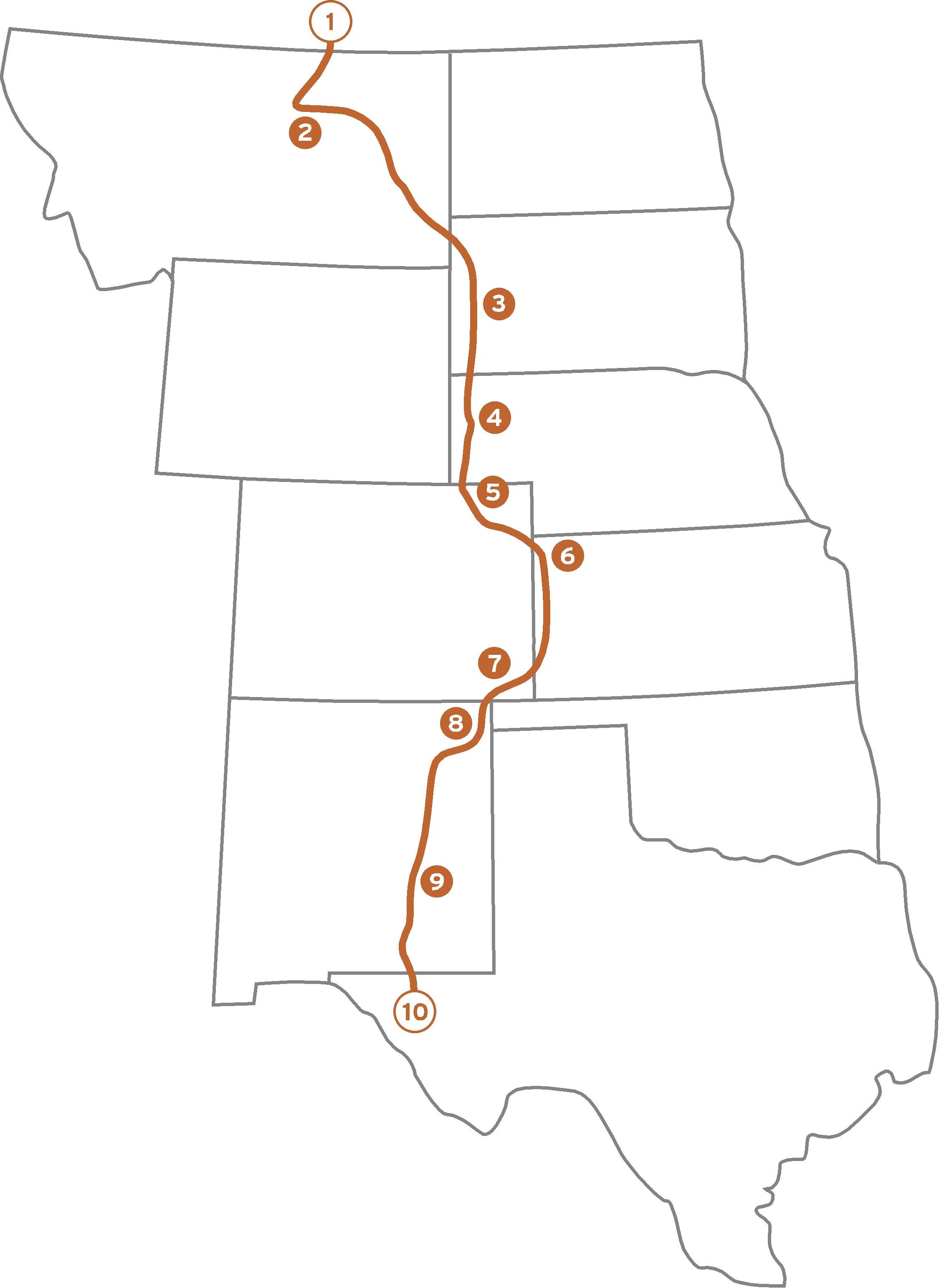Let’s start the new year with some inspirational quotes related to the Great Plains, shall we?
A grass seedling shows only modest top growth for the first three or four years of its life. It spends much of its energy in building a dense underground support system. Its roots grow deep enough to take advantage of subsoil stores of water in times of drought, and they grow wide enough to catch the nutriment and moisture in the upper levels of the soil in times of normal rainfall. The grasses make a forest that grows underground instead of aboveground, and an incredible thicket it is. A square meter of prairie sod might contain twenty-five miles of roots. – Paul Gruchow, Journal of a Prairie Year
There is a season in the heart of North America that is an unpredictable day-to-day battle between bitter winds carrying dense curtains of snow out of Canada and the high plains, turning the prairies into ice sculptures, and contrasting southern breezes that equally rapidly thaw out the native tall grasses and caress them gently. . . . The season is spring. – Paul A Johnsgard, Crane Music
Forests have surely housed many free and fierce people, but I somehow imagine them as being preoccupied with laying ambushes in thickets, worshipping oak trees, and painting their bellies blue. I could never take Druids seriously. They’re not in the same class as Cossacks, Zulus, Masai, Mongols, Comanches, Sioux, the highland clans of treeless moors, and trail drovers tearing up Front Street. Grasslanders, all.
There was a vein of wild exultation in such men. It wasn’t just the high protein diet, nor even that some of those men were mounted – although the horse people were among the wildest of all. I have a hunch that it was the mood of the land, stimulating its people with openness, hyperventilating them with freedom in a world of open skylines and few secrets. Such grasslanders never seemed to harbor the nasty little superstitions that flourish in fetid jungles and dank forests. Their superstitions were taller, their sagas and legends more airy and broad, and running through their cultures was a level conviction that they were the elite. While some forest people retreated into the shadowlands, men of the open had no choice but to breast the fuller world – and often came to do so with pride and even arrogance. It was a sense that was transfered almost intact when men left the land and took to the open seas, or learned to fly. They were all part of the same – wanderers beyond horizons, children of the wind who belonged more to the sky than to earth, conscious of being under the Great Eye . . . – John Madsen, Where the Sky Began



2 Responses
Thanks for share those nice words. I like both the deep green forest bottoms and the wide open plains. Each giving more depth of meaning to the other.
Agreed. The forest is certainly a nice place to wander. I thought his description of the types of people that came from these different places was interesting in that it says a lot about how environment can shape culture.